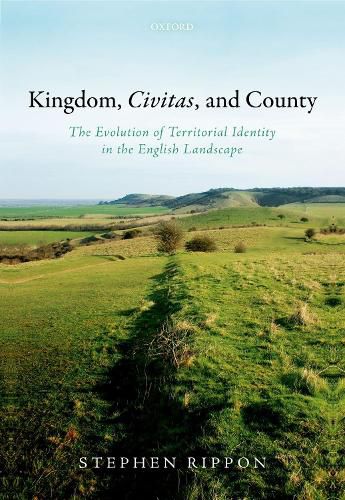Readings Newsletter
Become a Readings Member to make your shopping experience even easier.
Sign in or sign up for free!
You’re not far away from qualifying for FREE standard shipping within Australia
You’ve qualified for FREE standard shipping within Australia
The cart is loading…






This book explores the development of territorial identity in the late prehistoric, Roman, and early medieval periods. Over the course of the Iron Age, a series of marked regional variations in material culture and landscape character emerged across eastern England that reflect the development of discrete zones of social and economic interaction. The boundaries between these zones appear to have run through sparsely settled areas of the landscape on high ground, and corresponded to a series of kingdoms that emerged during the Late Iron Age. In eastern England at least, these pre-Roman socio-economic territories appear to have survived throughout the Roman period despite a trend towards cultural homogenization brought about by Romanization. Although there is no direct evidence for the relationship between these socio-economic zones and the Roman administrative territories known as civitates, they probably corresponded very closely. The fifth century saw some Anglo-Saxon immigration but whereas in East Anglia these communities spread out across much of the landscape, in the Northern Thames Basin they appear to have been restricted to certain coastal and estuarine districts. The remaining areas continued to be occupied by a substantial native British population, including much of the East Saxon kingdom (very little of which appears to have been ‘Saxon’). By the sixth century a series of regionally distinct identities - that can be regarded as separate ethnic groups - had developed which corresponded very closely to those that had emerged during the late prehistoric and Roman periods. These ancient regional identities survived through to the Viking incursions, whereafter they were swept away following the English re-conquest and replaced with the counties with which we are familiar today.
$9.00 standard shipping within Australia
FREE standard shipping within Australia for orders over $100.00
Express & International shipping calculated at checkout
This book explores the development of territorial identity in the late prehistoric, Roman, and early medieval periods. Over the course of the Iron Age, a series of marked regional variations in material culture and landscape character emerged across eastern England that reflect the development of discrete zones of social and economic interaction. The boundaries between these zones appear to have run through sparsely settled areas of the landscape on high ground, and corresponded to a series of kingdoms that emerged during the Late Iron Age. In eastern England at least, these pre-Roman socio-economic territories appear to have survived throughout the Roman period despite a trend towards cultural homogenization brought about by Romanization. Although there is no direct evidence for the relationship between these socio-economic zones and the Roman administrative territories known as civitates, they probably corresponded very closely. The fifth century saw some Anglo-Saxon immigration but whereas in East Anglia these communities spread out across much of the landscape, in the Northern Thames Basin they appear to have been restricted to certain coastal and estuarine districts. The remaining areas continued to be occupied by a substantial native British population, including much of the East Saxon kingdom (very little of which appears to have been ‘Saxon’). By the sixth century a series of regionally distinct identities - that can be regarded as separate ethnic groups - had developed which corresponded very closely to those that had emerged during the late prehistoric and Roman periods. These ancient regional identities survived through to the Viking incursions, whereafter they were swept away following the English re-conquest and replaced with the counties with which we are familiar today.